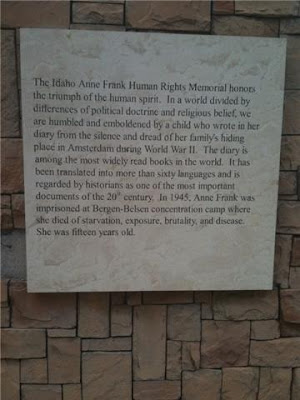
Friday, May 7, 2010
ART 108 SPRING 2010
MY FAVORITE ARTIST



SOAP/SPAM CARVING CONTEST
INSTALLATION PROPOSAL
ANNE FRANK HUMAN RIGHTS MEMORIAL



Saturday, May 1, 2010
ON THE RIGHTS OF MOLOTOV MAN
In the article “On the Rights of Molotov Man” I found myself having a very strong reaction and opinion in favor of the artist Joy Garnett. Starting with the Question posed, “does the author of a documentary photograph- a document who’s mission is, in part, to provide the public with a record of events of social and historical value- have the right to control the content of this document for all time?” I would like to answer that question with a question of my own. What art would we be without today if the art community only allowed “original” works having absolutely no resemblance or similarities to anything else in the world? Every artist, every writer every person who creates reflects their inspirations in their own works. For example the most obvious example of this would be Andy Warhol. His soup cans and Marilyn Monroe images are classic examples of and artist using someone else’s image as total inspiration for his own work.
While I wanted to sympathize with Susan Meiselas’ feeling as an artist, I personally could not get on board. While the idea of decontextualization of content is a valid concern, I don’t agree with the stifling of art or personal expression and I cannot believe the militant in the photograph would oppose the publicity of his cause. I think the Molotov Man probably appreciates the fact that the issues he felt and feels so passionately about has remained present in current works even thought is battle was being fought so many years ago.



